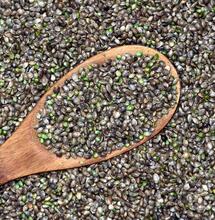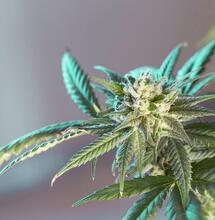Better Buds with Mr. Bill: Underfed Seedlings

Mr. Bill, our plant fix-it guy, invites you to ask him questions so that you can achieve better yields.
Mr. Bill, our plant fix-it guy, invites you to ask him questions so that you can achieve better yields.
Mr. Bill is ready to assist you by drawing upon over twenty-eight years of active grow shop experience - including answering growers' questions about the hydroponic industry. Before Bill opened his first store he worked in the agricultural industry for five years, growing tobacco.
Hey there, Bill,
I have a problem with a three-week old seedling. It's growing under a 140-watt, 2700k CFL light that is about a foot above the tops of the plants. I'm using a heat mat, as it's winter in Australia; otherwise it would be way too cold, at around 59° F [15° C]. The plants get a tiny bit of grow nutrients every second day. Leaves are turning very yellow and curling up, but it's not nute burn - maybe a magnesium deficiency?
Aleesha
Since the growing tip is not curling or misshapen, the problem is likely caused by an extreme lack of feed. The photo shows what looks like a total deficiency of nutrients; since the growth tips are growing properly out of the center of the plant, feeding only a small amount of nutrients may not be enough. Follow the manufacturer's recommendations to determine the amount of plant food to give to your babies at their various stages of life.
If you are feeding every two days, you are not necessarily applying water and nutrients correctly. Choose a container size that will allow the plant to receive enough water for three to four days of growing. Transplant from one size of container up to a larger size - no more than four times from cuttings to harvest. This will allow the plant to utilize the moisture in the growth medium before you add more water with nutrients.
This situation makes a good case for watering plants from the top, instead of bottom feeding. Bottom feeding does not allow a flush to happen, just an accumulation of salts being drawn up into the growing medium. Top feeding allows you to flush about ten percent of the nutrient solution through your substrate, allowing some of the fresh nutrient solution to flush old nutrients away.
It is highly recommended to use a mild nutrient solution for cuttings or seedlings; dilute your nutes to quarter-strength when they are this young. However, feed your plants at a normal strength once they have been transplanted into your growing medium.
Your chosen substrate appears to contain no perlite or vermiculite - both are helpful at retaining air and water within soils.
A few common ways of monitoring the water content in soil-based growth media:
- Stuff one finger into the soil, under the surface (which can appear dryer than it really is, as a result of grow room fans, heat from lamps, etc.) in order to gauge water content
- Lift each plant pot to gain an understanding of the weight and/or saturation status of your growth medium and plant
- Feed only on certain days - not recommended
- Watch leaves for wilting - not recommended
|
Heating mats do keep soil warm, but might 'cook' your roots if you're not careful. |
CFL, LED and induction lights do not produce very much of the heat that would normally help to dry out the growing medium; it is for this exact reason that they make watering more difficult. These lights will change the way that you apply nutrient solution to your plants.
Heat mats will not warm up an entire growing area, but they will warm up the soil by about 41º F (5º C) and have been known to 'cook' roots, killing them. Laying out the heat mat on varying types of surfaces will also provide different root zone temperatures. To make sure that you are not cooking the roots, try to maintain temperatures between 72º and 78º F (22º to 25.5º C) - any warmer and bacteria can multiply too fast, especially harmful bacteria. Growers should try to keep root systems around 68º F (20º C).
If you are growing in a tent, heat from a 600-watt lamp will warm up the growing area to an acceptable temperature. Cooler temperatures, such as during wintertime, can potentially cause a 41º to 44.6º F (5º to 7º C) difference in day/night temps. If necessary, keep the ballast inside the grow tent for added heat. Major differences in temperature between night and day can lead to shorter internodes between branches, resulting in a shorter plant.



